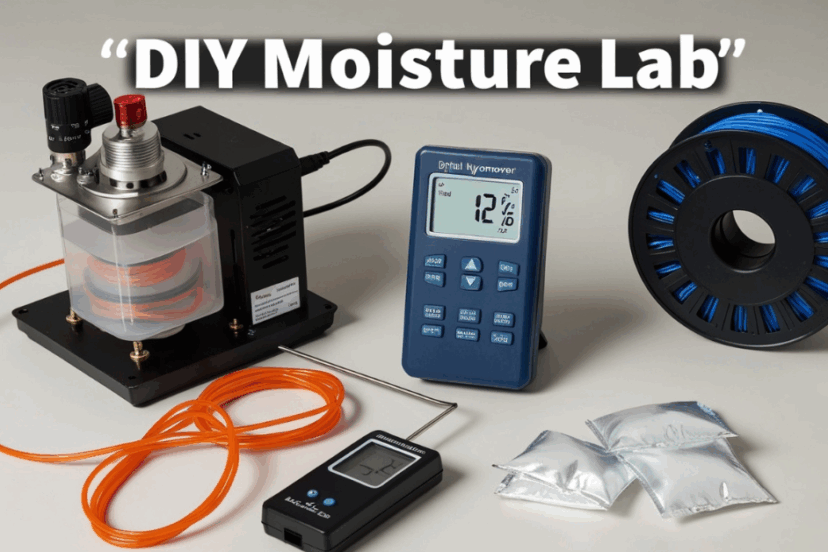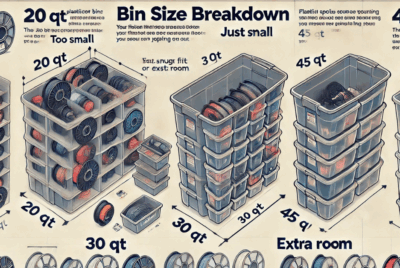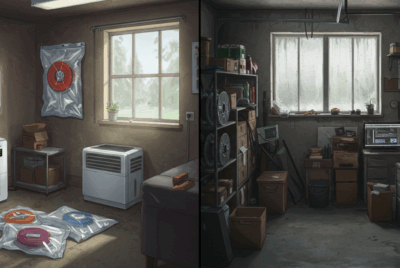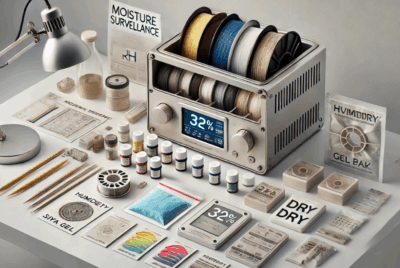How to Tell If Your 3D Filament Has Absorbed Moisture?
1. Introduction: Moisture—The Silent Print Killer
Ever load up your favorite spool, start a print, and end up with stringy blobs instead of a masterpiece? Chances are, your filament’s been quietly absorbing moisture like a sponge at a pool party.
Let’s break down how to test for moisture in 3D filament—so your next print doesn’t look like a hot mess.
2. Why Filament Moisture Is a Big Deal
3D printing is all about precision, and moisture throws everything off. Filament absorbs humidity from the air, and when heated in the hot end, the water turns to steam. That steam expands, causing:
- Tiny air bubbles
- Popping or fizzing noises
- Uneven extrusion
- Weak or brittle prints
3. Common Signs of Moisture in Filament
- Before we jump into the tests, here are a few common red flags:
- Popping or sizzling sounds while printing
- Stringing or oozing even with proper retraction settings
- Weak layer adhesion
- Surface imperfections or bubbling
- Brittle or easily snapping filament
- Sound familiar? Time to test.
4. The Pop and Fizz Test (Hot End Method)
This is the fastest, most dramatic test.
- How to do it:
- Heat your hot end to your filament’s printing temperature (e.g., 200°C for PLA).
- Manually feed the filament or extrude a few mm.
- Listen carefully.
- What to expect:
- If it pops, hisses, or sizzles… yep, it’s wet. That sound is steam escaping as moisture boils inside the filament.
5. Visual Surface Check: Brittle or Blistered?
- Inspect the filament up close.
- Normal filament: Smooth, consistent color and texture
- Moisture-logged filament: Tiny bubbles, pitting, or a chalky surface
- Look closely—your filament might be telling you it’s thirsty.
6. Print Quality Clues: Stringing and Gaps
Sometimes, your print quality is the only clue you need.
- Lots of wispy stringing?
- Inconsistent layers?
- Gaps in walls or top layers?
- These are classic signs of excessive humidity wreaking havoc on extrusion flow.
7. Filament Snap Test: Too Brittle to Bend?
Try unspooling a bit and gently bending it.
- Dry filament: Slightly flexible, may bend before snapping
- Moist filament: Snaps with little pressure, sounds brittle
- This test works great for PLA and ABS. For TPU or nylon, you’ll want to rely more on the pop test or drying.
8. Hygrometer Jar Method (Science Class Vibes)
Feeling a little DIY?
- Here’s how it works:
- Grab a clear, airtight container
- Put your filament inside with a digital hygrometer
- Seal it for a few hours
- Read the humidity level
- Over 40% RH? Your filament’s been drinking the air again.
9. Use a Filament Dryer with a Humidity Reader
- Want to get fancy?
- Brands like SUNLU, PrintDry Pro, or Polymaker PolyDryer offer filament dryers that also monitor humidity.
- These tools are super helpful for both drying and testing. Just plug in, check the reading, and start saving your spools.
10. What to Do If Your Filament Is Wet
If you’ve confirmed your filament’s moisture-logged, don’t panic—you can fix it.
- Try these methods:
- Use a filament dryer at the recommended temperature
- Oven dry it (carefully!) at 45–60°C for 4–6 hours
- Store it in a vacuum-sealed bag with silica gel after drying
11. Can You Save Moisture-Damaged Filament?
- Yes! Most filaments can be salvaged if dried properly. Nylon and TPU may take longer, but they bounce back well.
- Just don’t print with it wet. It’s like trying to write with a soggy pen.
12. How Long Does It Take for Filament to Absorb Moisture?
- Some filaments—like Nylon—start absorbing moisture in just a few hours if left out. PLA is slower, but give it a couple of days and it’ll start acting up too.
13. Which Filaments Are Most Sensitive?
- Here’s your quick-reference cheat sheet:
| Filament Type | Moisture Sensitivity |
|---|---|
| PLA | Moderate |
| ABS | Moderate |
| PETG | High |
| Nylon | Very High |
| TPU | High |
| PVA | Extremely High |
14. Storage Tips to Avoid This Mess in the First Place
- Always reseal filament in airtight bags or bins
- Add fresh silica gel packets
- Store in a dry, cool, and dark space
- Invest in a dry box or vacuum sealer
- Prevention is cheaper than recovery!
15. Final Thoughts: Trust Your Filament Like Fresh Bread
You wouldn’t leave fresh bread in a steamy bathroom, right?
Think of your filament the same way. Keep it dry, store it smart, and give it a quick test if it’s been out in the wild for too long. Your printer (and your future self) will thank you for it.
❓FAQs
- Can moisture-damaged filament ruin my printer?
It won’t destroy your printer, but it can clog your nozzle or lead to failed prints. - How often should I test for moisture?
If your filament has been exposed for a few days, it’s worth checking. - Can I use rice as a desiccant?
You can—but silica gel is far more effective and reusable. - Are filament dryers worth the money?
Yes, especially if you live in a humid climate or print often. - What if my hygrometer reads 50% RH inside the container?
That means your filament is likely absorbing moisture. Dry it ASAP!




